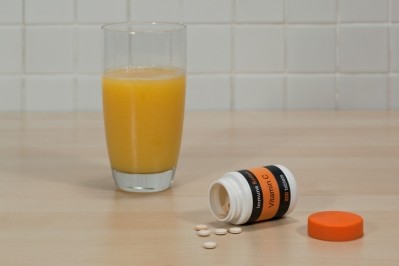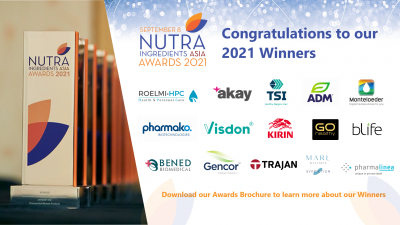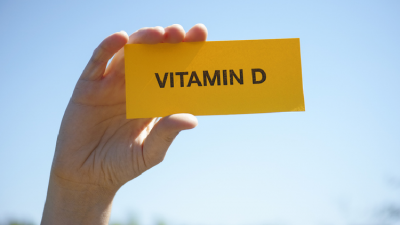Thai calcium concern: Adolescents have poor knowledge of mineral sources and nutrition labels - Study

Only 30% of students attained the recommended daily intake of calcium at 800mg, and their main sources were UHT milk, malt drink, minnow, canned fish, calcium fortified soy milk and Chinese kale.
These findings are significant because calcium deficiency in early adolescents (10 to 14 years old) is one of the most commonly reported micronutrient deficiencies worldwide, including Thailand.
For this study, researchers surveyed students from the Khon Kaen province in North East Thailand.
The first part of the study involved a market survey where nutritionists assessed the range of calcium products sold in the local supermarkets, convenience stores, grocery stores, and fresh markets.
Both fresh and packaged foods that were high in calcium (n=93) were identified and categorised into meat and meat products, vegetables, dairy and dairy products, legumes, nuts, and seed products, and calcium supplement tablets.
High calcium foods are defined as containing at least 160mg of calcium per serving.
Part two of the study was a school survey involving 168 students from 11 to 14 years old. They were surveyed on the 93 types of high calcium products and quizzed on whether they were aware of the product, and if they consumed it within the last three months.
Part three (n=209) of the study was conducted one month later in the same school, where students were asked to identify the amount and sources of calcium they had consumed in the past 24 hours to get a more accurate dietary pattern. They were also quizzed on their knowledge about sources of high calcium foods and how to interpret calcium information on nutrition labels.
In Thailand, the nutrition label is required to display the calories, quantity and Thai recommended daily intake (TRDI) for seven macronutrients and sodium, and the TRDI for five micronutrients which are vitamin A, B1, B2, iron and calcium.
However, the actual amounts of micronutrients are not required to be shown on the nutrition label, especially if there are present in very small amounts.
“It is widely known that a lack of knowledge about nutritional information limits healthy dietary behaviour,” researchers wrote in Risk Management and Healthcare Policy.
The student was conducted in September 2018.
Sources of calcium
Part one of the study revealed that the majority of the high calcium foods sold in local stores were meat and meat products including processed foods, and ready to eat foods.
Based on part two of the study, of the 93 high calcium products identified, only 49 were known or consumed by students in the last three months.
Within the meat and meat product category, subjects mostly consumed edible minnow, small-size freshwater shrimp, and canned fish with soft bones.
Examples of dairy products that had been consumed were UHT milk, pasteurised milk, yogurt, and malt drink.
Example of legumes, nuts, seeds consumed by students were hard tofu, and calcium fortified UHT soymilk.
For vegetables, those consumed by the respondents were turkey berry, cork wood flowers, pak waan, and Chinese kale.
“Our survey showed that there were many high calcium products available in the markets in Khon Kaen province. However, only half of those were known by the lower secondary school students surveyed in our study.”
24-hour intake
In part three of the study which analysed food consumption over 24 hours, it was further indicated that few high calcium products were consumed by surveyed students.
The median amount of calcium consumed in the previous 24 hours was 410 mg, and only 31.1% of students consumed more than the TRDI.
Their main source of calcium were dairy products such as UHT milk and malt drink and meat products like minnow, and canned fish.
Within the dairy category, yoghurt and cheese were not consumed as frequently.
Researchers explained that these dairy products tend to be more expensive and are not common ingredients in the Thai diet. “It may be impractical to suggest that students or parents incorporate dairy products into students’ meals.”
They recommended meat and meat products as a better source of calcium, “These products are relatively inexpensive and easy to find in local fresh markets, so increased consumption of meat products should be promoted to increase calcium consumption.”
“Students should be informed that canned fish contains relatively higher calcium than large fish because canned fished includes softened bones. Students and parents need to be made aware of the high calcium products available in their communities.”
Other high calcium items that were consumed within the last 24 hours were calcium fortified soy milk and Chinese kale.
Calcium knowledge
The other part of the study assessed calcium knowledge among students.
The overall average knowledge score was 6.5±2.4 out of a maximum of 17.
The average knowledge scores for food sources that are high in calcium and for interpreting the calcium information on a sample nutrition label were 4.6+1.8 (out of 12), and 1.9±1.2 (out of 5), respectively.
These showed that subjects had poor knowledge about sources of calcium and interpreting nutrition labels.
For example, students tend to associate malt drinks to being a good source of energy instead of calcium, which is how it is advertised in Thailand. Similarly for yoghurt, it is advertised as a source of probiotics instead of calcium.
In Thailand, milk is aggressively advertised as a good source of calcium to promote bone health, hence why milk was the main source of calcium for these students.
Students were also found to score poorly on interpreting nutrition label for calcium content.
Most did not know the TRDI for calcium, or what “calcium 30%” meant on the label, and they seemed unaware that the amount of calcium they need to consume each day must reach 100% of the TRDI.
“The findings suggested an urgent need to provide lower secondary school students with knowledge about sources of calcium and train them to read and interpret nutrition labels.”
Researchers cited a change in US’s nutrition label which declared micronutrients in percent daily value as well as the exact amount. “This type of change could help consumers in planning and maintaining healthy dietary practices in Thailand.”
Source: Risk Management and Healthcare Policy
https://doi.org/10.2147/RMHP.S312264
“Consumption of Calcium and Knowledge About Calcium Sources and Nutrition Labels Among Lower Secondary School Students in Thailand”
Authors: Raksaworn Jaisaard, et al











